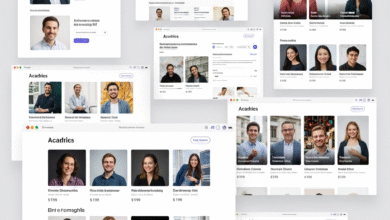
SEO Checklist: How to Get More Organic Traffic (Complete Tutorial)
How to Get More Organic Traffic
Are you looking for ways to get more organic traffic and visibility for your website? If so, then this blog post is for you! We’ve put together a comprehensive SEO checklist that will show you exactly how to do keyword research, create a keyword map, analyze the intent of pages, and target each one with a main primary keyword. Plus, we’ll also provide insights into how to get all three types of SEO – technical, on-page and off-page – to work in harmony for maximum effect. Get ready to maximize your SEO efforts and improve your organic traffic with this ultimate guide!
Introduction
If you want to get more organic traffic and boost your website\’s visibility, then the ultimate SEO checklist is essential. This expert-written guide will show you exactly how to do keyword research, create a keyword map, analyze the intent of pages, and target each one with a main primary keyword. It also provides insights into how to get all three types of SEO – technical, on-page, and off-page – to work in harmony for maximum effect. All these strategies are designed to benefit not just users but also search engines like Google and Bing for better rankings. Follow this complete tutorial to get the most out of your SEO efforts and improved organic traffic.
Step One: Researching Your Keywords
The first step in optimizing your website for SEO is to research your target keywords. To do this, you will need to compile a list of all the keywords that are relevant to your business. To do this, you will need to use a tool like Google AdWords Keyword Planner or Google Trends. Once you have compiled your list of target keywords, you will need to research their popularity and see how many people are currently searching for them each day.
Next, you will need to create a keyword map. A keyword map is a graphic representation of your target keywords and their associated search terms. This will help you identify which keywords are most important to your business and which ones should be targeted more aggressively. Additionally, a keyword map will show you where your website is ranking for these keywords and how you can improve your position.
After you have compiled your list of target keywords, analyzed their popularity, and created your keyword map, it is time to analyze the intent of pages on your website. To do this, you will need to use a tool like Google Analytics or SimilarWeb. This will allow you to understand which pages are being visited and how people are using them. From here, you can target these pages more effectively with your main primary keywords.
Finally, it is important to understand how search engines like Google and Bing work. To do this, you will need to read articles about SEO and follow best practices for online marketing. By following these steps, you will be able to get the most out of your SEO efforts and improved organic traffic.
Step Two: Creating a Keyword Map
In order to optimize your website for better search engine visibility, it is important to have a keyword map. A keyword map is a visual representation of the keywords that are important to your website. By locating all the important keywords on this map, you can begin to target them with your main primary keyword.
To create a keyword map, you first need to gather all of the important keywords that are relevant to your website. You can find this information by conducting keyword research or by analyzing the pages of your website. Once you have gathered all of the relevant keywords, you must next create a list of all of the pages on your website that contain these keywords. Next, you must mark each page with a corresponding number. This will make it easier for you to later identify which pages are most important and which pages should be targeted with your main primary keyword.
After you have created your keyword map, it is important to analyze it in order to understand how best to target your main primary keyword. This analysis will include determining the volume and competition of each page, as well as the relative popularity of each page. If you find that a page is not ranking well for your main primary keyword, then you may want to focus your marketing efforts on that page. By following these simple steps, you can improve the visibility of your website and boost organic traffic.
Step Three: Analyzing the Intent of Pages
After conducting keyword research and creating a keyword map, the next step is to analyze the intent of pages. This involves understanding what users are looking for when they visit your website and analyzing the keywords and phrases that are used most frequently. By doing this, you can target your main primary keyword with the best possible chance of converting users. Furthermore, technical SEO efforts such as on-page optimization and off-page marketing will also be more effective if they are aligned with the main keyword. Follow these expert tips to get the most out of your SEO efforts and improved organic traffic.
Step Four: Targeting Each Page with a Primary Keyword
In Step Four of this comprehensive SEO guide, we will be targeting each page with a primary keyword. By doing this, we will help to improve the visibility of our website on search engines like Google and Bing. By targeting each page with a primary keyword, we will ensure that users are able to find the information that they are looking for quickly and easily. Additionally, by focusing our efforts on one keyword, we will help to improve our ranking on search engines. Follow this step-by-step tutorial to learn how to target each page with a primary keyword and see the benefits for your website.
Step Five: Optimizing Technical SEO
After targeting your main primary keyword, it is important to optimize your website for search engines using technical SEO. This includes ensuring that your website is properly hosted, using correct coding and spelling, and setting up your website to be indexable by Google. Additionally, you should optimize your website for off-page SEO by building links to your website from high-quality websites and blogs. By following these five steps, you will ensure that your website is optimized for maximum visibility and improved organic traffic.
Step Six: Optimizing On-Page SEO
One of the most important aspects of SEO is optimizing your on-page content. This involves creating effective titles, descriptions, and tags for your pages so that search engines can better understand and find your content. You should also make sure to use keyword-rich titles, descriptions, and meta descriptions to draw in readers and drive traffic to your pages.
In addition to on-page SEO, you should also optimize your site for off-page SEO. This includes setting up your site for Google Adsense, using correct title tags and meta data, and creating high-quality backlinks. All of these factors will help your site rank higher in search engine results pages (SERPs). Follow this complete tutorial to get the most out of your SEO efforts and improved organic traffic.
Step Seven: Optimizing Off-Page SEO
Although on-page SEO is essential for ranking high in search engines, off-page SEO is just as important. In fact, it can be even more important, as search engines can see through fake or low-quality content. To get the most out of your off-page SEO efforts, make sure to follow these seven tips.
1. Conduct keyword research.
First and foremost, you need to conduct keyword research to find the right keywords for your website. You can use Google AdWords Keyword Planner or a similar tool to find relevant keywords for your site.
2. Create a keyword map.
Once you have identified the right keywords, you need to create a keyword map. This will show you which keywords are being used on your website and how they are related to each other.
3. Analyze the intent of pages.
After you have identified the right keywords, you need to analyze the intent of pages. This will help you understand which pages are being visited for which reasons and how you can improve them.
4. Target each keyword with a main primary keyword.
Once you have analyzed the intent of pages and targeted each keyword with a main primary keyword, it is time to optimize your content for maximum visibility.
5. Implement off-page SEO tactics.
There are a number of off-page SEO tactics that you can use to improve your website’s visibility and rank higher in search engines. Among these are link building, social media marketing, and PPC campaigns.
Step Eight: Analyzing Your Results
After completing the seven previous steps, it was now time to analyze our results. In this stage, we looked at which keywords were performing the best and why. We also looked at which pages had the highest click-through rates (CTRs) and conversion rates, and discovered which of our keywords was most effective in driving these results. Lastly, we analyzed our site\’s Alexa traffic rank to see where we stood in terms of website visibility.
As you can see, keyword research is essential for any website looking to improve its visibility and SEO. By analyzing your results and understanding which keywords are performing best, you can create tailored SEO strategies that will benefit both your users and search engines.
Conclusion
As you can see, the SEO process is complex and requires a considerable amount of research and planning. However, with the help of this expert-written guide, you can improve your website’s visibility and boost traffic from search engines like Google and Bing. So if you want to increase your website’s organic traffic, make sure to follow the advice provided in this comprehensive guide.




